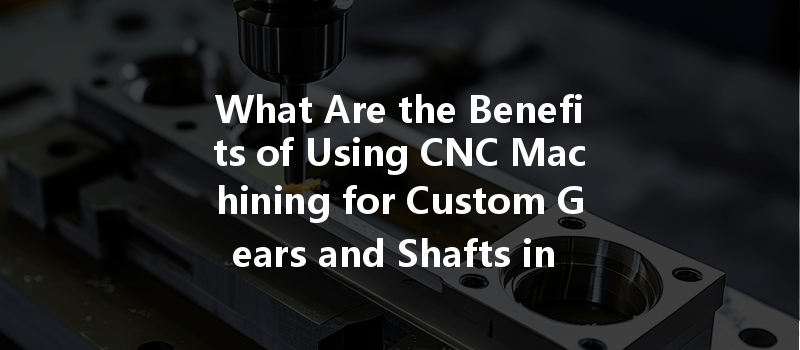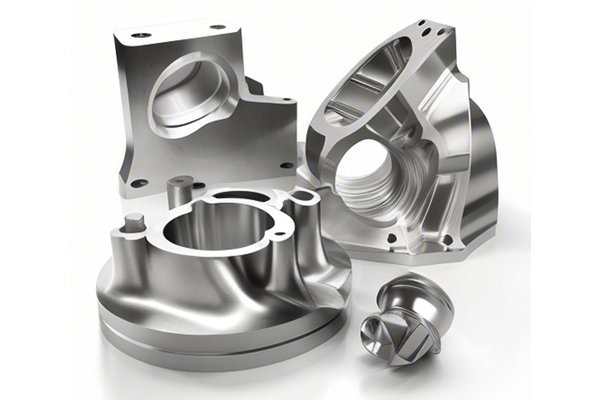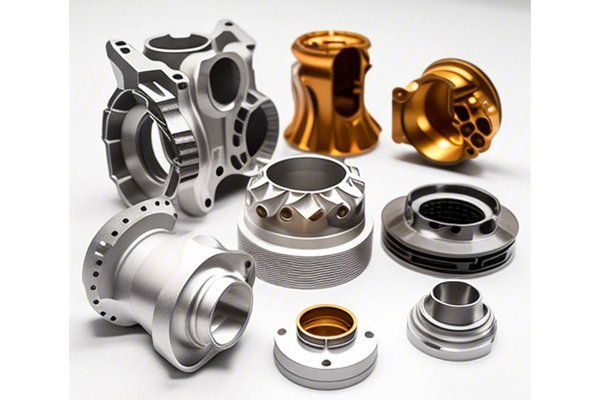Have you ever wondered how intricate machinery and automotive systems function so seamlessly? A staggering fact to ponder is that small components, like gears and shafts, play critical roles in ensuring the smooth operation of various machines. According to industry reports, over 70% of modern machinery relies heavily on high-quality gears and shafts. These critical components are not random; they are designed and produced through precise engineering techniques like CNC machining.
In the manufacturing landscape, CNC machining (Computer Numerical Control machining) stands out as a technology that fundamentally enhances the production of custom gears and shafts. But what exactly are the benefits, and how can it resolve common manufacturing challenges? This blog aims to explore the multifaceted advantages of using CNC machining in the production of custom gears and shafts, providing you with actionable insights and solutions to boost efficiency and quality in manufacturing.
Understanding CNC Machining
What is CNC Machining?
CNC machining is a manufacturing process that uses pre-programmed computer software to control the movement of tools and machinery. This approach allows for the production of parts with incredible precision and consistency. Unlike traditional manual machining, CNC machining eliminates human error and enables manufacturers to produce complex geometries and tight tolerances in various materials, including metals, plastics, and composites.
Key Components of CNC Machining
CNC Machining Workflow
The Importance of Custom Gears and Shafts in Manufacturing
Gears and shafts are pivotal in transferring motion and force within machinery. Custom gears and shafts enable manufacturers to tailor components to specific performance requirements, accommodating diverse applications in sectors such as automotive, aerospace, industrial machinery, and robotics.
Advantages of Custom Gears and Shafts
Advantages of CNC Machining for Custom Gears and Shafts
Now that we’ve established the significance of gears and shafts in manufacturing, let’s delve into the specific benefits of CNC machining in their production.
One of the foremost benefits of CNC machining is its ability to produce components with remarkable accuracy. Because CNC machines are controlled by computer programs, they can achieve tolerances of ±0.001 inches (0.025 mm) or better. This level of precision is vital for gears and shafts, where even minor deviations can lead to performance issues or mechanical failures.
Many gears and shafts require intricate designs that are challenging to achieve through traditional machining techniques. CNC machining can produce complex shapes and features, such as helical gears and splines, with ease. This flexibility makes it possible to explore innovative designs that improve functionality and performance.
In today’s fast-paced manufacturing environment, speed is critical. CNC machining significantly reduces lead times, allowing manufacturers to produce custom gears and shafts more quickly. This efficiency can be particularly crucial for industries that require rapid prototyping or short production runs.
CNC machining can work with a wide range of materials, including metals like steel and aluminum, plastics, and even composites. This versatility enables engineers to select the most suitable material for their gears and shafts, considering factors such as weight, strength, and cost.
While the initial investment in CNC machinery can be high, the overall production costs often decrease in the long run. The efficiency, reduced waste, and rapid production capabilities of CNC machining can lead to lower per-unit costs, especially in large production runs. Additionally, quality improvements can reduce the need for expensive rework or replacements.

CNC machines operate with minimal human intervention, which reduces the risk of errors caused by manual operations. With proper setup, CNC machines can run autonomously, allowing manufacturers to focus on other critical aspects of production.
CNC machining facilitates rigorous quality control measures, enabling manufacturers to maintain high standards throughout the production process. Automated inspection tools can quickly identify deviations from specifications, ensuring that all components meet quality requirements before they are shipped.
Whether a small order or a sustained high-volume production run, CNC machining provides the scalability needed to accommodate changing demand. Manufacturers can easily adjust their production rates without significant changes to their setup processes.
CNC machining contributes to sustainability in manufacturing by maximizing material usage and reducing waste. Unlike conventional machining, which can produce significant scrap material, CNC machining minimizes waste through precise cutting techniques.
One of the most significant advantages of CNC machining is its ability to accommodate customization. Manufacturers can quickly modify designs and processes, enabling them to make adjustments that align with evolving market demands or specific client needs.
Addressing Common Challenges in Gear and Shaft Production
While CNC machining brings many benefits, manufacturers often face challenges when producing custom gears and shafts. Let’s explore some common challenges and provide solutions:
Challenge: Designers may struggle to create gear and shaft designs that can be effectively manufactured using CNC machining.
Solution: Collaborate closely with CNC machinists during the design phase to ensure that designs are practical. Using design software equipped with simulation capabilities can also help identify potential manufacturing issues.
Challenge: With numerous material options available, selecting the best one for specific applications can be daunting.
Solution: Conduct thorough research and engage material scientists early in the design process to identify appropriate materials. Establish criteria for weight, strength, wear resistance, and cost to narrow down the options.
Challenge: Accurately estimating the costs involved in producing custom gears and shafts can be challenging.
Solution: Leverage advanced quoting software used by CNC service providers to receive precise cost estimates. Factors like machining time, material costs, and setup fees should be considered for an accurate total cost.
Challenge: Ensuring consistent quality across production runs can become problematic, especially when scaling up.
Solution: Implement a robust quality assurance program, utilizing advanced inspection technologies such as Coordinate Measuring Machines (CMM) to evaluate components against specifications frequently.
Challenge: The need for quick turnarounds in prototyping can clash with extensive machining processes.
Solution: Adopt agile methodologies for prototyping, using CNC machining and additive manufacturing (3D printing) in tandem. This allows for faster iterations and easier modifications.
Challenge: Not all manufacturers have the in-house expertise to operate CNC machines effectively.
Solution: Investing in professional training for staff or collaborating with CNC machining service providers can fill knowledge gaps. Outsourcing machining tasks to experienced firms can also mitigate risks associated with poor-quality cuts or inefficiencies.
In conclusion, utilizing CNC machining for producing custom gears and shafts in manufacturing presents countless advantages, including unparalleled precision, flexibility in design, reduced lead times, and overall cost-effectiveness. As machinery continues to evolve, the reliance on high-quality gears and shafts will remain paramount. Understanding these benefits and how to navigate common challenges will enable manufacturers to leverage CNC machining to its full potential, enhancing their competitive edge in a dynamic market landscape.
The importance of CNC machining in the context of custom gears and shafts cannot be overstated. As we’ve seen, it empowers manufacturers to produce high-quality components tailored to meet specific needs, ultimately driving innovation and efficiency across various industries.
This blog serves as a valuable resource for anyone looking to understand the profound impact of CNC machining on custom component manufacturing. Reflecting on these insights can lead to informed decisions and improved practices, inspiring continuous advancement in your manufacturing processes. Embrace the future of manufacturing with CNC machining as a core component of your operational strategy, and watch your efficiency and quality soar to new heights.
Related Posts
- Can CNC machining provide precision machining services according to customer-provided drawings and specifications?
- How to Control Thermal Deformation of Stainless Steel During CNC Machining: Essential Tips and Techniques?
- What Are the Effective Workpiece Fixture Design Techniques for CNC Machining Projects?






